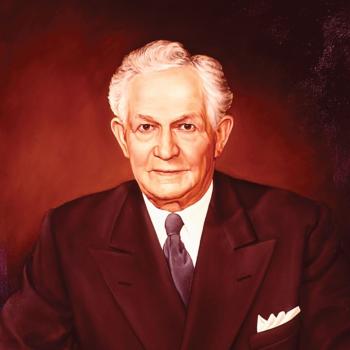I grew up in a home where praying over food was second nature, religious even. Every meal began with bowed heads, hands folded, and a simple prayer of gratitude. It was a ritual as familiar as passing the salt, I literally cannot think of a time for my family to not pray and bless the food. But if I’m being honest, it was just that—a ritual. And a somewhat mechanical, mindless one at that. I didn’t yet understand that food was more than just fuel, that the energy it carried could be transformed, or that the way we engaged with it could shape our spiritual connection to the world.
That understanding wouldn’t come until much later in my life, when I began exploring American indigenous and Eastern spiritual traditions.
The first time it really clicked for me was when I read about Native American food practices. Unlike my childhood prayers, where we simply asked for the food to “bless and nourish our bodies,” many indigenous cultures viewed food as a sacred exchange. They honored the plants and animals that provided sustenance, often returning the best of the harvest or hunt back to the Earth as an offering. There was an understanding that food wasn’t just taken—it was given, and with that receiving came a responsibility to give back.
This practice resonated deeply with me. What if food wasn’t just about consumption, but relationship? What if eating was an extension of our spiritual practice, a way of participating in the cycles of life with mindfulness and reverence?

Rudolf Steiner & Biodynamic Farming: Treating Food as Sacred
As I kept searching, I stumbled upon the work of Rudolf Steiner, the Austrian mystic and founder of biodynamic farming and the Waldorf Schools. Steiner believed that food is alive with spiritual forces and that how it is grown directly impacts not just our physical health, but our spiritual well-being. Biodynamic farming treats the land as a living organism, using cosmic rhythms—such as the phases of the moon—to determine planting and harvesting cycles. Instead of synthetic fertilizers, farmers apply specially prepared herbal composts, designed not just to enrich the soil but to balance the spiritual forces within the land. Biodynamic farming, which appeared in the 1920s, eventually gave birth to today’s organic farming movement.
David Avocado Wolfe & The Energy of Raw Foods
David Avocado Wolfe, a well-known voice in the raw food movement, takes this even further. He teaches that food is encoded with light and intelligence—a literal transmission of solar energy that enters our bodies. Eating food in its most natural state, he argues, keeps that life force intact, allowing us to receive it in its purest material and spiritual form.
We’ve all heard the phrase, “You are what you eat,” but this gave it a whole new meaning. If food carries energy, intention, and vibrational quality, then what I put into my body isn’t just affecting my physical health—it’s affecting my consciousness.

Prasad: The Sacred Offering of Food
That idea found further validation in the Hindu traditions of Prasad, where food is first offered to the Divine before being consumed. In temples, people bring fruit, sweets, or rice to be blessed by the gods, and in return, they receive a portion back—now considered Prasad, infused with divine grace. This practice, according to Hinduism (Sanatana Dharma) can actually change the physical properties of the food, making it healthy for the body and soul.
This practice reminded me of my childhood prayers, but with a profound difference: Instead of merely asking for food to nourish us, Hindus first offer it in gratitude, acknowledging its sacred nature before partaking. The food doesn’t just sustain the body—it uplifts the spirit.
Loving Water
Dr. Masaru Emoto, a Japanese scientist and researcher, became widely known for his groundbreaking experiments on how human thoughts, emotions, and words influence water molecules. Through high-speed photography, Emoto observed that water exposed to loving, positive words—such as “thank you” and “love”—formed beautifully symmetrical, crystalline structures when frozen. In contrast, water exposed to negative words—such as “hate” or “fool”—formed chaotic, disorganized, and distorted patterns. His research, detailed in books like The Hidden Messages in Water, suggested that human consciousness has a tangible effect on physical matter, particularly water, which makes up over 70% of the human body. While his work has been met with both fascination and skepticism within the scientific community, it continues to inspire those who explore the intersection of spirituality, consciousness, and the physical world.
Again, if our bodies are 70% water, imagine the effect that kind and loving words have on us physically. And vice versa, imagine the damage we can do to our fellow beings if we aren’t careful with our thoughts and words. The idea should infuse how we parent our children and treat our fellow man.

What Can We Do Today?
Most of us aren’t farmers or yogis living in ashrams, but that doesn’t mean we can’t incorporate these spiritual food practices into our modern lives.
- Bless your food with intention. Not as a routine, but with deep awareness of where it came from and the energy it carries.
- Support biodynamic and regenerative farms. These methods honor the land and produce food filled with life force.
- Grow something yourself. Even if it’s just herbs on a windowsill, tending to plants connects you to the cycle of life.
- Offer food before eating. This could be as simple as setting aside a symbolic bite, expressing gratitude, or even giving back by donating food.
- Eat food that is alive. Choose fresh, whole foods as often as possible, knowing that they carry the highest energy.
My journey from rote childhood prayers to conscious eating has been eye-opening. Food is not just something we consume—it’s something we engage with spiritually. The more reverence we bring to it, the more we align ourselves with the greater cycles of life.
So, the next time you sit down to eat, take a moment. Close your eyes. Feel the energy of what’s before you. Whisper a blessing—not just for your own nourishment, but for the Earth, for the hands that grew it, and for the sacred dance that makes life possible.













